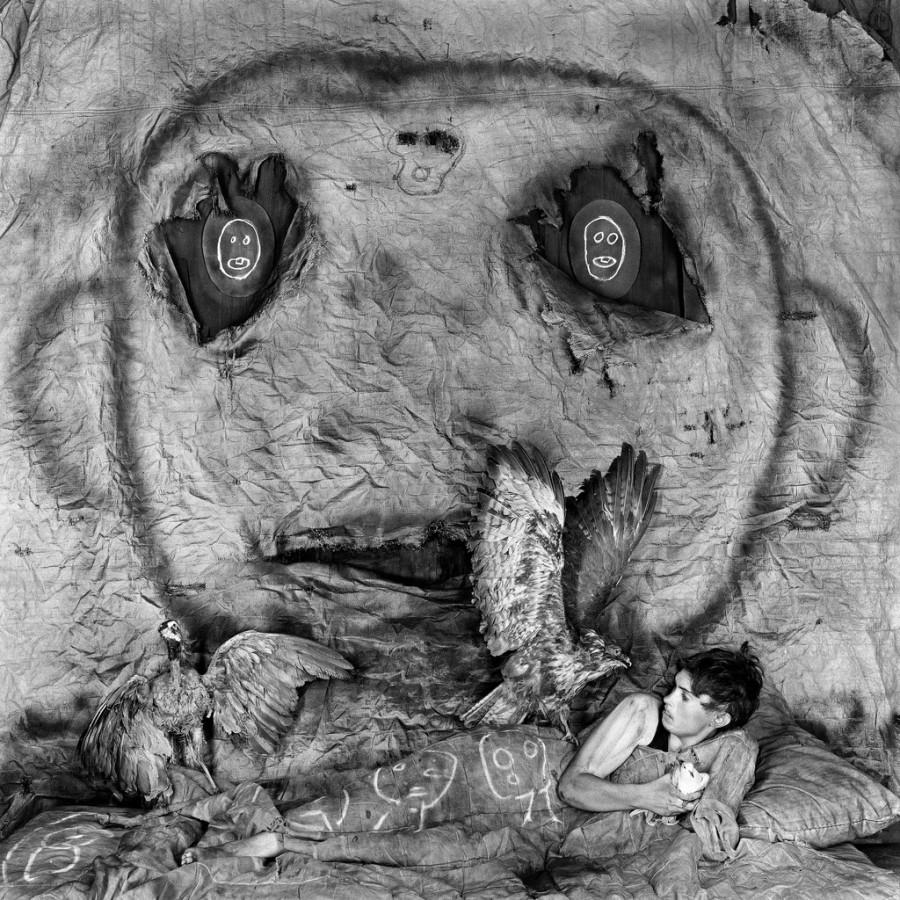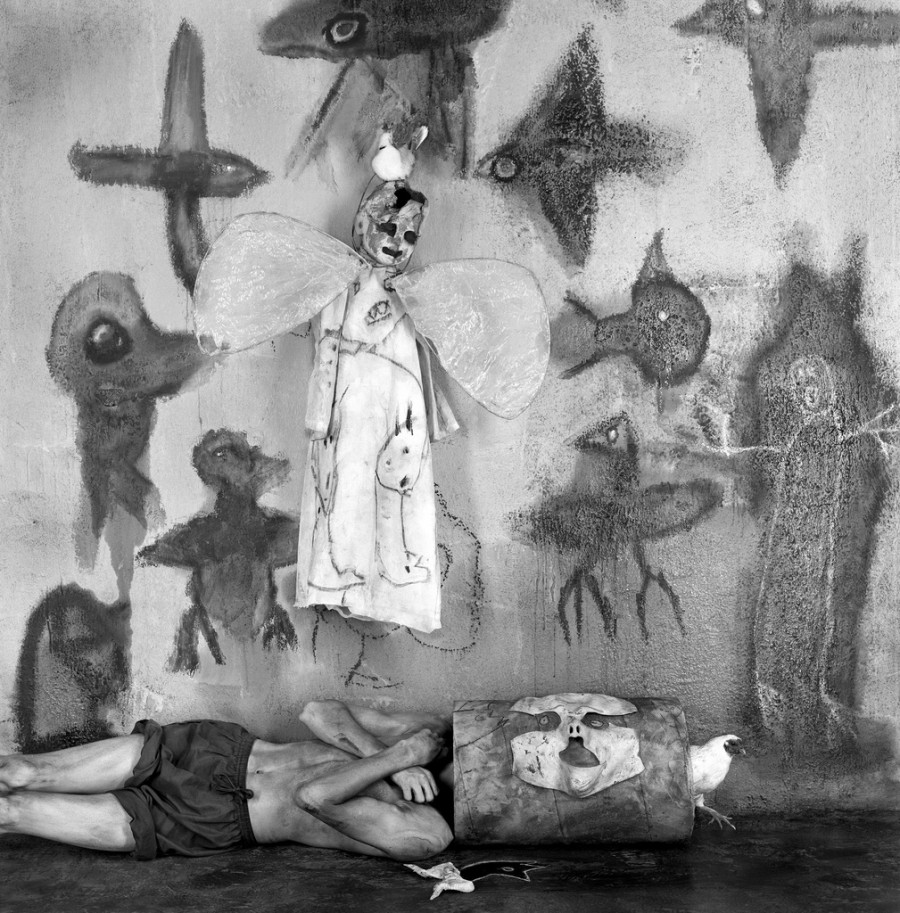Roger Ballen's photographs make your nightmares look quaint. For over 50 years the artist has been rendering a photographic reality too twisted to appear in reality or even the dark corners of the subconscious. Images like these can only occur in Ballen's world.
Ballen began his photographic career documenting impoverished and marginalized South Africans, revealing in his unsettling depictions his viewers' hunger for disturbing images themselves. But later in his works, Ballen veered more and more toward surreal imagery, meshing fact and fiction to plunge the deepest darkest regions of the subconscious.
In his newest exhibition, "Asylum," Ballen probes a space somewhat real and somewhat imagined, inspired by a house that Ballen visited in Johannesburg years ago. The images toy with the dual connotations of an asylum as a site of comfort and captivity, safety and madness. We reached out to Ballen to learn more about his upcoming show.

The press release indicates that this exhibition signifies your shift from an observer to something else. Would you agree with that and if so, how would you describe this shift?
Well, I think what they meant is when you look at a photograph, you're looking at a two dimensional object from a physical position. What I've done is made an elaborate installation, a particular type of room with a particular aesthetic that fits mine, a three-dimensional space. You can physically enter a Roger Ballen space which you can't do with a photograph.
The Asylum series was inspired by a house you visited in 2008. What originally struck you about this space?
From 2008 until June, 2013 I've been working in a place I call the "Asylum of the Birds" building. I created 91 black-and-white photographs in a place -- if you think of the "Psycho" house from Hitchcock's movie, it's sort of that type of building. The house contains a lot of birds flying around, as well as other animals who come in and out-- birds, chickens, rats, spiders, lizards -- and there also constantly people on the move. All of these elements came together in the photographs. Every picture of the series has a bird in it, that was the criteria. It may be a real bird, it may be a drawing of a bird, but there has to a bird there somewhere.
What intrigued about birds specifically?
Birds in most cultures, even from the beginning of Biblical times, have always been the link between heaven and earth. They are creatures from the heavens and they fly above us. The birds occupy a special space; they are this link between the soil and the sky.
When you photograph humans there is a deep, psychological digging below the surface there. Was your experience photographing animals something similar, completely separate?
When people look at a human photograph they immediately identify with the human being; they try to understand the person socially, psychologically, culturally. With animals you can't do that. You know implicitly you can't really ever understand an animal. An animal, by its very nature, is much more ambiguous. The pictures then can't be so easily put into any box.

I like a quote of yours that says "the camera has its own mind, its own stomach, its own digestive system." After working with the medium for 50 years, do you feel you're gaining insight into the camera's mind?
Yes, the camera has its own mind but integrated with its mind is my mind. What comes out of it, though, I never can predict. The essence of what happens in that camera I can never know. That's why I always use film. I've been using the same camera for the last 30 years. I like the idea that you walk away from a picture and you really don't know. I like the process of the developing process rather than something that is electronic. For me it's a much more interesting, enveloping, profound process, and I'm the last generation to have grown up with film and in a black-and-white film world.
Do you feel like the rise of digital photography and Instagram is negatively shaping the future of photography?
The problem is there's just so much of it. It's like trying to figure out on the beach what's the nicest grain of sand. People are so inundated with it that it's hard to separate originality, meaning, all the things that make great art. It's the most over-supplied media in the world. The number of people interested in expressing themselves through photography versus sculpture or painting -- it's this giant surplus. When I grew up photography meant working on the street with a camera and trying to interact with the world around you. Now there's a lot of looking at computer screens and trying to be clever. For me I think great art says something about the human condition in one way or another and if you spend too much time looking at a computer it's hard to get that insight.
What about color photography?
I just feel black-and-white photography is far more abstract of an art form. It doesn't make any pretense that it captures reality, which color photography tends to do. What you're seeing is camera reality, digital reality, it's just another form of reality but it doesn't necessarily mimic the reality that the mind sees. I've always felt there was something a little artificial about color photography; I like the abstraction and the bare essentialness of black-and-white. But that's just me.






Roger Ballen's "Asylum" is on view until April 21, 2014 at the Museum of Old and New Art in Tasmania.